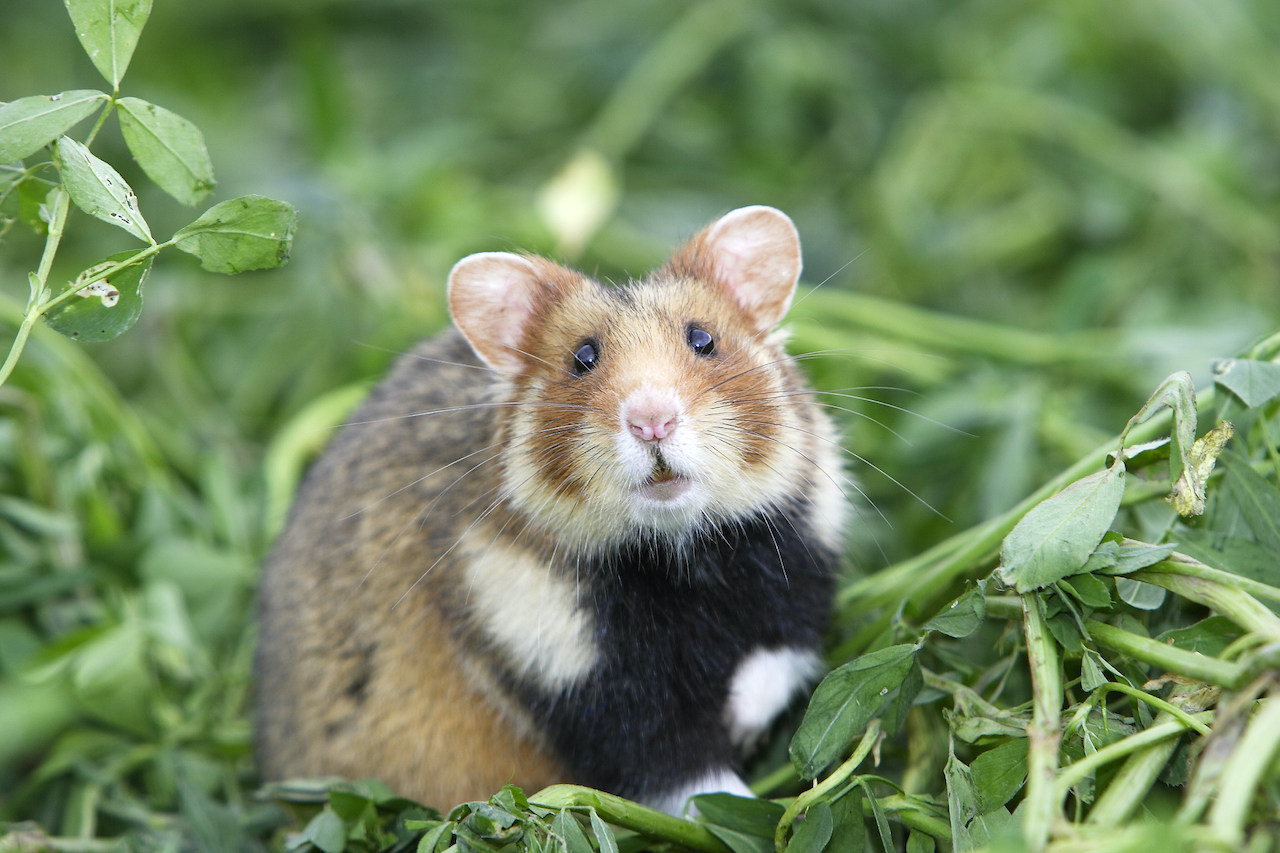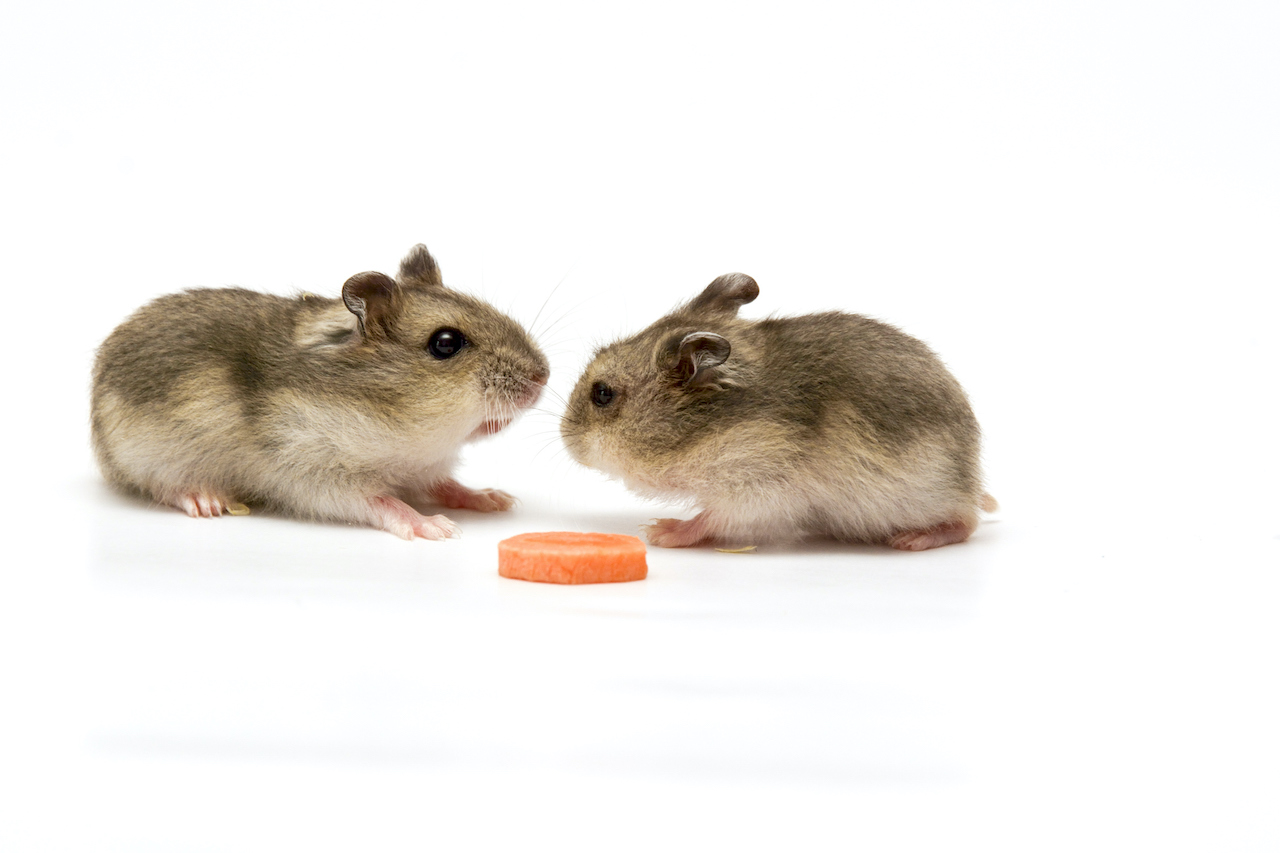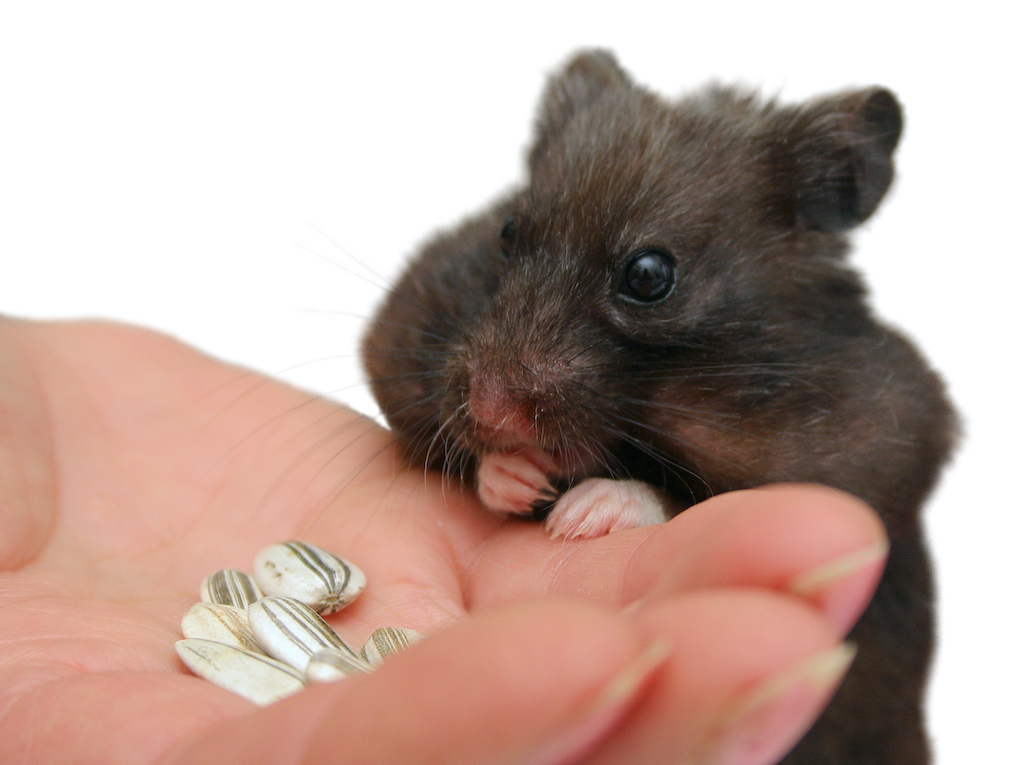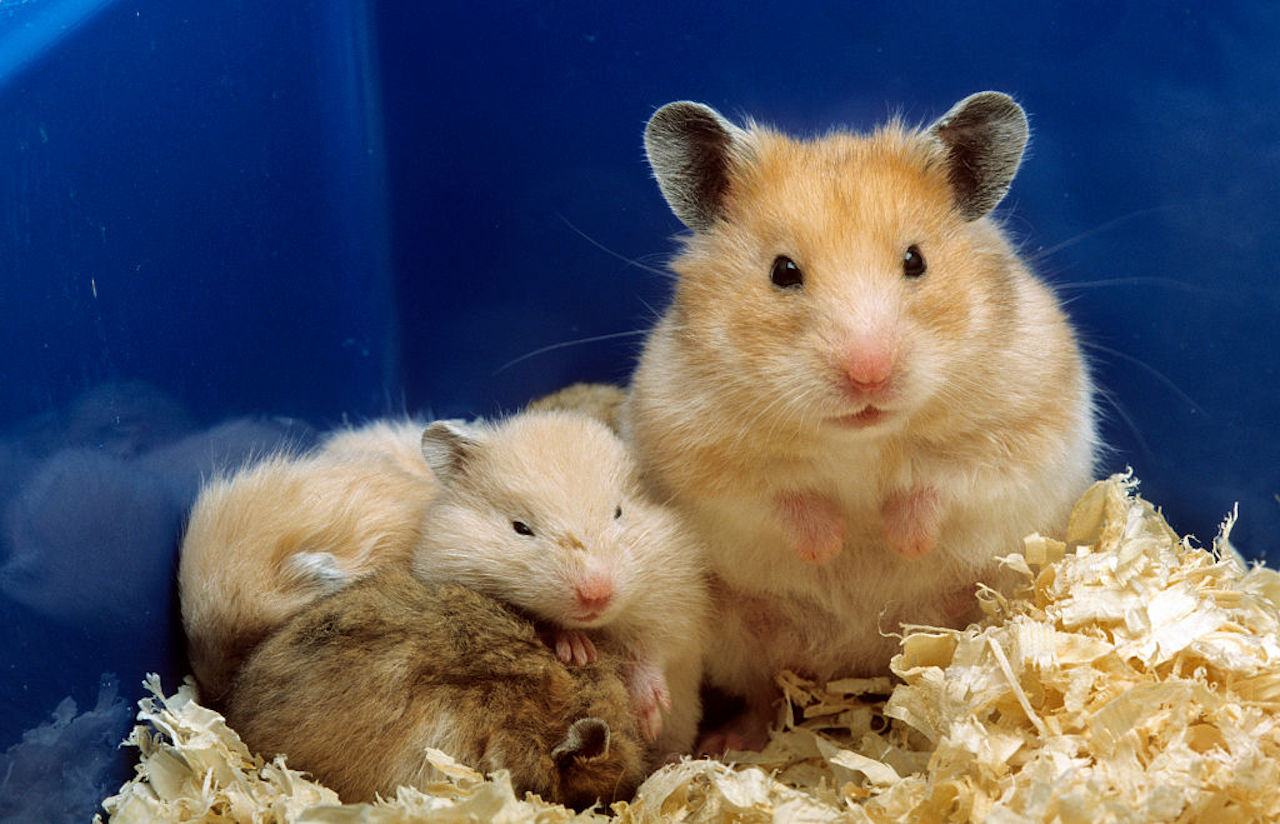Hamsters: Diet, habits & types
Hamsters have stout bodies with short tails and small furry ears.

Hamsters are small rodents that are commonly kept as house pets. They are distinguishable from other rodents due to their short tails, stubby legs and small ears. Hamsters have many different colors, including black, grey, brown, white, yellow, red or a mixture of several colors.
How big are hamsters?
There are 24 species of hamsters, according to the Universities Federation for Animal Welfare, and these animals come in a wide range of sizes. The European breed can grow as large as 12.5 inches (32 centimeters) long and are some of the biggest varieties of hamsters, according to the journal Biomarkers in Toxicology.
The dwarf hamster lives up to its name. These tiny hamsters grow to around 2 to 4 inches (5.5 to 10.5 cm) long, according to AZ animals. The most common pet hamster, the Syrian hamster, also known as the teddy bear hamster or golden hamster, usually grows to about 6 inches (15.24 cm) long.
Hamster habitat
The first hamsters were discovered in Syria, according to the book ‘The Hamster’, though they also live in Greece, Romania, Belgium and northern China. In the wild, they like to live in warm, dry areas, like steppes, sand dunes and the edges of deserts, according to World Atlas.
Hamsters were brought to the United States in 1936 from Syria, according to the Louisiana Veterinary Medical Association. They were some of the first domesticated hamsters.
Habits and behavior

Hamsters are nocturnal, according to the ASPCA, which means they like sleeping during the day. In the wild, they dig burrows, which are a series of tunnels, to live and breed in. Hamsters will also store food in their burrows. Living underground keeps wild hamsters cool in hot climates.
Some hamsters are very social, while others are loners. For example, the Syrian hamster doesn't like living near other hamsters, according to the Hamster Society Singapore. They are very territorial and should never be put in a cage with other hamsters. It will bite the other hamster, and may even kill it. Dwarf hamsters, on the other hand, are social and like to have a friend nearby.
Get the world’s most fascinating discoveries delivered straight to your inbox.
Wild hamsters will hibernate if the weather gets cold enough. Hamsters will wake up from their hibernation periodically to eat, according to the journal Hormones and Behavior. If there isn't enough food stored, hamsters will wait to hibernate until their surplus is to their liking.
Classification/taxonomy
- Kingdom: Animalia
- Phylum: Chordata
- Subphylum: Vertebrata
- Class: Mammalia
- Order: Rodentia
- Suborder: Myomorpha
- Superfamily: Muroidea
- Family: Cricetidae
- Subfamily: Cricetinae
- Genera: Allocricetulus, Cansumus, Cricetus, Cricetulus, Mesocricetus, Phodopus and Tscherskia
- Species: 24 species. The most common hamsters found as pets are: Syrian golden hamster (Mesocricetus auratus); Chinese hamster (Cricetulus griseus); Campbell's or dwarf hamster (Phodopus campbelli); Djungarian or winter-white Russian dwarf hamster (Phodopus sungorus); Roborovski hamster (Phodopus roborovskii)
Hamster diet

Hamsters like to eat seeds, grains, nuts, cracked corn, fruits and vegetables, according to the Hamster Society Singapore. Wild hamsters also eat insects, frogs, lizards and other small animals. A captive hamster's diet should be at least 16 percent protein and 5 percent fat, according to Canadian Federation of Humane Societies.
Hamsters' name comes from the German word “hamstern,” which means “hoard,” according to the journal Aging and Biological Rhythms. This is a very apt way to describe how hamsters eat. They have pouches in their cheeks that they stuff with food. Then, they will carry their hoard back to their colony so they can eat it later. Pet hamsters will often store food under their cage bedding.
Offspring
Male and female hamsters waste no time when mating with one another. If you put two opposite gender hamsters into a cage together, the female will become pregnant very quickly. Their gestation period lasts 15 to 20 days, according to the Young People’s Trust for the Environment (YPTE).
After the birth, the litter is blind until they are two weeks old and at 3 to 4 weeks the young are weaned. Female European hamsters tend to have two to three litters per year, according to the journal Scientific Reports. Hamsters typically live one to two years, but can live up to three years in captivity.

Conservation status
Golden hamsters are considered vulnerable to extinction by the International Union for Conservation of Nature and Natural Resources' Red List. This breed is found in Syria, where agriculture and human development are taking over the hamster's natural habitat.
According to the journal Ecology and Evolution, the European hamster is critically endangered. The main threat to this species are changes to its habitat, due to agricultural activity and urbanization. When land is cleared for agriculture, large dense habitats become divided into small patches, making survival more difficult.
Measures to protect hamster populations include growing plants that provide food for hamsters and animal tracking. Captive-bred hamsters are sometimes released into wild populations in an attempt to increase numbers, according to the journal Mammalian Biology.
Other facts
Generally, hamsters are ideal house pets because they are gentle and are easy to take care of. They will bite when startled or scared, though. They will also bite if they are awakened during their sleeping time, according to Pets Radar. Since they sleep during the day and humans are awake during the day, this means that biting is more likely.
Hamsters have very poor eyesight. Their scent glands on their backs secrete an easily identifiable smell. To find their way around, they leave a trail of scent by rubbing their backs against objects, according to the journal Physiology and Behavior. When a hamster needs to find their way back home, they will use this scent trail as a guide.
Hamster's teeth grow continually, according to AZ Animals. Chewing on wood or twigs keeps their teeth short. Without something to chew on, their teeth would grow so long they would injure the roof of the mouth and lips.
A mother hamster is very protective. If she fears that her babies are in danger, she will put the babies in her mouth pouches and carry them to safety, according to the British Small Animal Veterinary Association (BSAVA).
Additional resources
You can learn more facts about the biology of hamsters at the Louisiana Veterinary Medical Association website. If you’re considering keeping a hamster as a pet, this page from the RSPCA has essential information about this animal’s needs.
Bibliography
“The UFAW Handbook on the Care and Management of Laboratory and Other Research Animals”. Universities Federation for Animal Welfare (2010). https://books.google.co.uk/books
“Rodents model for toxicity testing and biomarkers”. Biomarkers in Toxicology (2014). https://www.sciencedirect.com/topics/immunology-and-microbiology/european-hamster
Murphy, Michael R. “History of the Capture and Domestication of the Syrian Golden Hamster (Mesocricetus auratus Waterhouse)”. The Hamster. Springer (1985). https://link.springer.com/chapter/10.1007/978-1-4757-0815-8_1
“Circadian Organization and Female Reproductive Cyclicity”. Aging and Biological Rhythms (1978). https://link.springer.com/chapter/10.1007/978-1-4757-4460-6_11
“How maize monoculture and increasing winter rainfall have brought the hibernating European hamster to the verge of extinction.” Scientific Reports (2016). https://www.nature.com/articles/srep25531
“Scent marking and the maintenance of dominant/subordinate status in male golden hamsters”. Physiology & Behavior (1987). https://www.sciencedirect.com/science/article/abs/pii/0031938487901144
“Mice, rats, hamsters and gerbils”. BSAVA (2010). https://www.bsavalibrary.com/content/chapter/10.22233/9781905319909.chap1
“Are All Conservation Measures for Endangered Species Legitimate? Lines of Thinking With the European Hamster”. Ecology and Evolution (2020). https://www.frontiersin.org/articles/10.3389/fevo.2020.536937/full
“Predation and survival in reintroduced populations of the Common hamster Cricetus cricetus in the Netherlands”. Mammalian Biology (2020). https://link.springer.com/article/10.1007/s42991-020-00063-5



